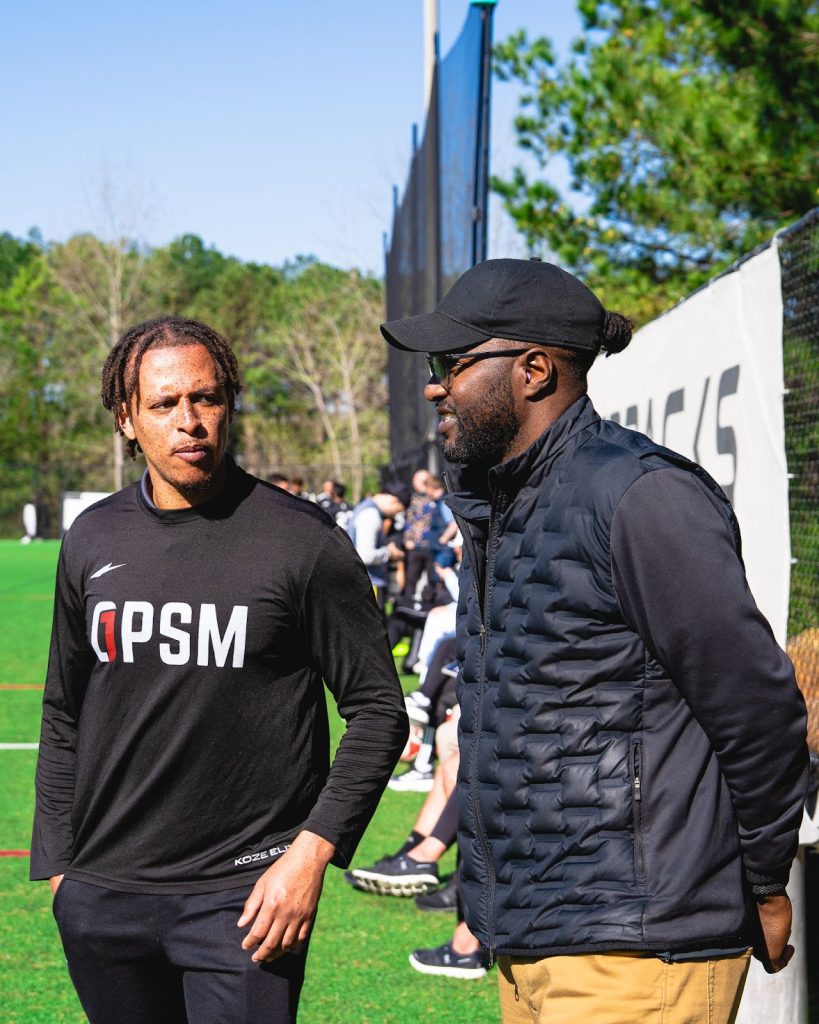As high school soccer players look to continue their path into the collegiate level, the recruitment process can be daunting. With multiple facets to balance such as academics, performance, and a long list of schools to decide from, it can be difficult to navigate your next steps. OPSM’s Executive Director of Collegiate Recruitment, Jared Maloney, offers a roadmap for athletes to make the transition from high school to collegiate soccer, either in the U.S. or Canada.

One of Jared’s first steps in college recruitment for high school players is this: “Make sure that in your offseason, you’re playing at a high enough level that’s going to translate to the next level.” This means that outside of your regular high school programs you should be finding new opportunities in the offseason to develop your skill set with other high level players. Whether that’s through club teams, academies, or high-level showcases such as OPSM’s Nextgen Combines in a variety of cities.
At the collegiate level, talent can only take you so far, coaches look for specific traits depending on player position. There are a few characteristics that high level coaches look for at the striker and defender positions.
For strikers, creativity, the use of both feet, and good positioning are key. And for defenders, “stick your tackles, communicate, and have a presence on the field,” Jared advises. However regardless of position, it is extremely important to learn how to become comfortable being uncomfortable.
Understanding the strengths and weaknesses of your game is essential for growth, your best attributes are what will catch the eyes of coaches and scouts, so don’t be afraid to showcase them. When creating highlight videos, properly showcasing your best skills and attributes is key. Not only should you showcase your best skills and attributes through highlight videos, but also when attending recruiting events or combines. Events like these are where you should really focus on displaying these skills to a point where coaches can identify them. You can be a good midfielder with strong distribution skills, but if you don’t showcase that ability, coaches won’t know!
Academic eligibility is the key to many doors being opened or closed. Grades play a big role in college recruitment, with NCAA Division 1 schools typically requiring a minimum GPA of 2.5, with some higher-level programs requiring a 3.0. Although many high-level programs require you to uphold a minimum GPA, there are also options outside of Division 1 if you find your GPA to be below the required threshold.
There are many alternatives to NCAA, including NAIA, NJCAA, and Canadian university leagues U-Sports and CCAA, there are plenty of options regardless of your academic eligibility. By playing with high level competition and getting your foot in the door of collegiate athletics, these programs can offer players a bridge to continue their academic and athletic careers while still building towards higher levels of competition. This pathway can be extremely important for athletes who do not secure a D1 opportunity directly out of high school. Although it may seem like a setback in your career, these schools can be essential for both your athletic and career development. While gaining experience, honing your skills, and consistently being on the pitch, athletes can find opportunities to transfer to higher level programs. The path to Division I isn’t always direct, but it is always attainable.
With over 205 Division I schools in the U.S. there are plenty of opportunities, however what may be the perfect fit for one player, may not be for another.
“Where do you want to be?” Jared asks. “Do you want to be a suburb? In a city where it’s a little more urban? Or a more rural area?” You need to think about where you’ll thrive, not only on the pitch, but also your school, life, and soccer balance for multiple years.
Athletes need to look at all levels of competition while in the recruitment process. From top tier Division I schools like the University of Vermont, to small college programs in both the U.S. and Canada. While the flashy big names schools may be attractive, you may find more growth and development in store at a smaller school.
Exposure is everything for recruitment, if you’re not getting seen, you’re not getting recruited. Jared emphasizes that players should “put themselves in situations where they’re being exposed.” There are multiple ways to increase your exposure, step one is to ensure that you are in a situation that you will be seen. Playing for a program that gets you on the pitch instead of sitting on the bench for the majority of the game. Showcasing your skills on the pitch is essential during recruiting.
OPSM is a key player in collegiate exposure, with combines taking place in multiple cities across North America every year. The main goal of our combines are to give exposure to the kids and educate them on what it takes to reach the next level. With strong relationships with both collegiate coaches and programs across North America, the OPSM NextGen Combines are top tier opportunities for player exposure.
Although attending showcases, combines, and ensuring you’re in the right situation are great boosts to your exposure, players should also take matters into their own hands by reaching out directly to coaches. Coaches love to see players take initiative.
As mentioned before, the recruitment process can be intimidating for players and families who are new to it. OPSM is there for not only the players, but also looks to educate the parents throughout the process. “Having someone to guide them through the process is vital,” Jared says. With a lot of families navigating recruitment for the first time, OPSM looks to offer mentorship and experience to ensure players and families are led to the best possible outcome.
The Process
The recruiting process can be a confusing time for many players, however by following Jared’s roadmap the process can be simplified.
- Start early
- Stay on your game year round
- Know your grades
- Know your options
- Seek exposure
- Take initiative
- Use OPSM’s resources as a tool
With hundreds of schools to choose from and multiple different directions to go, being prepared for the process is key. By putting yourself in the right environment and understanding all facets of the process, the opportunities will come.
